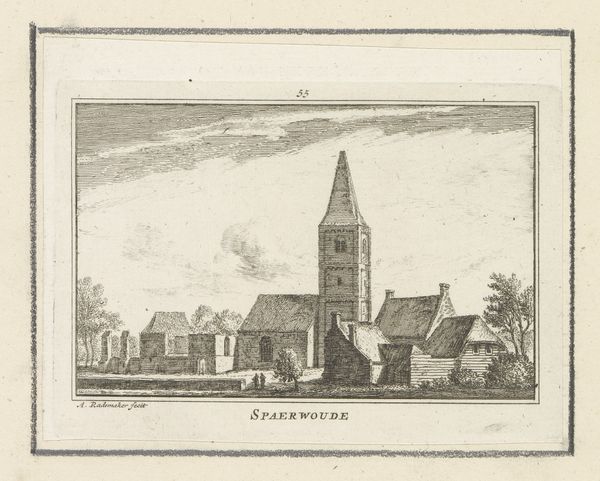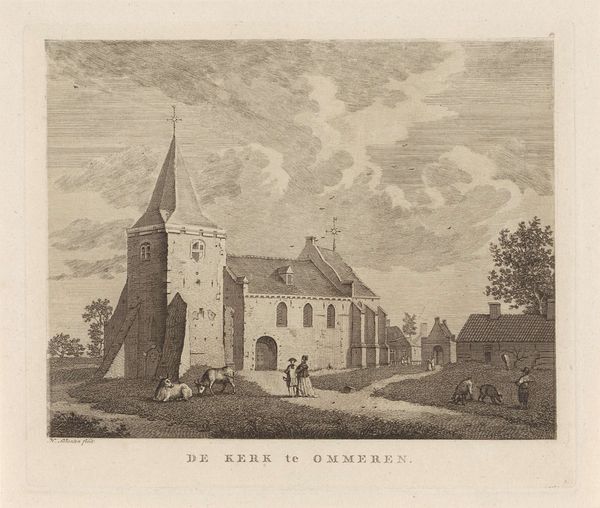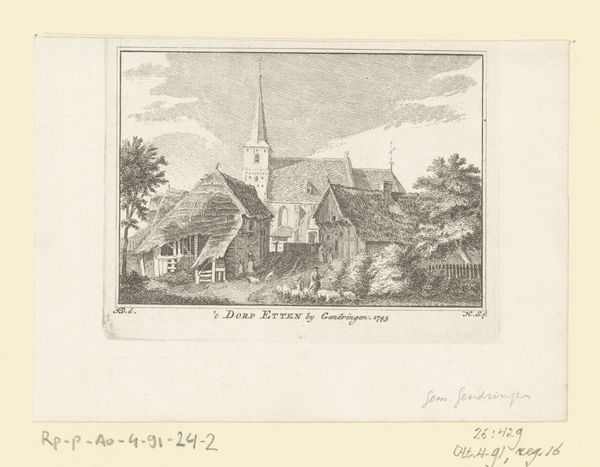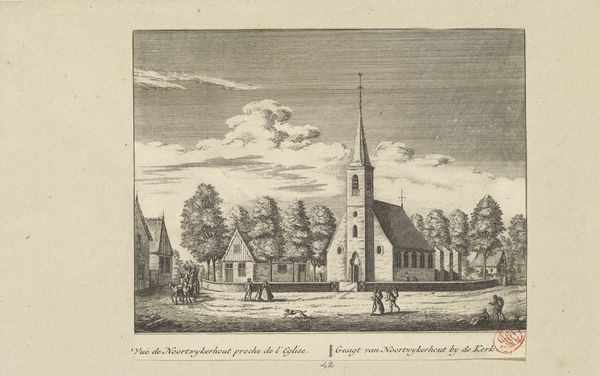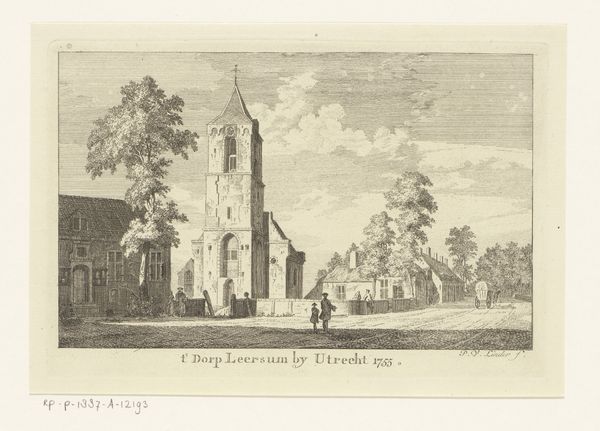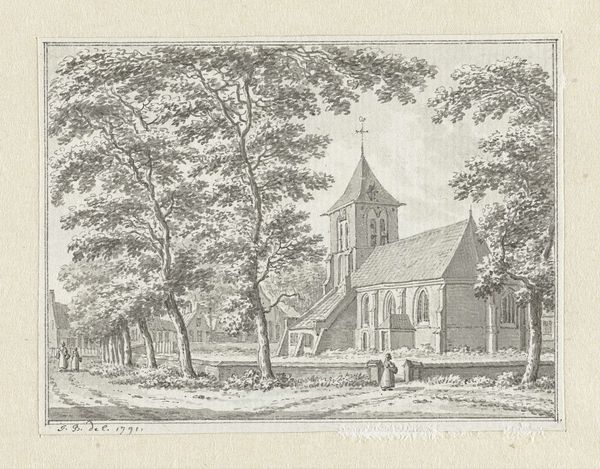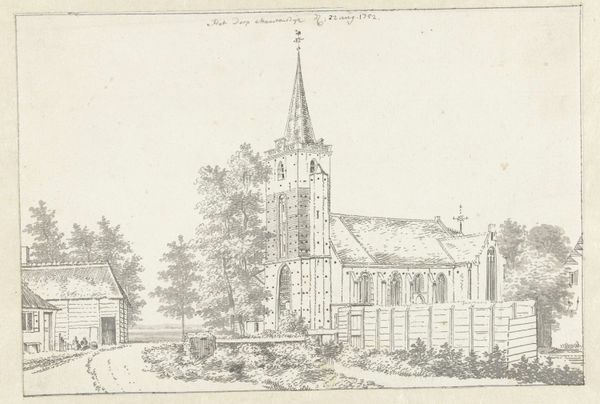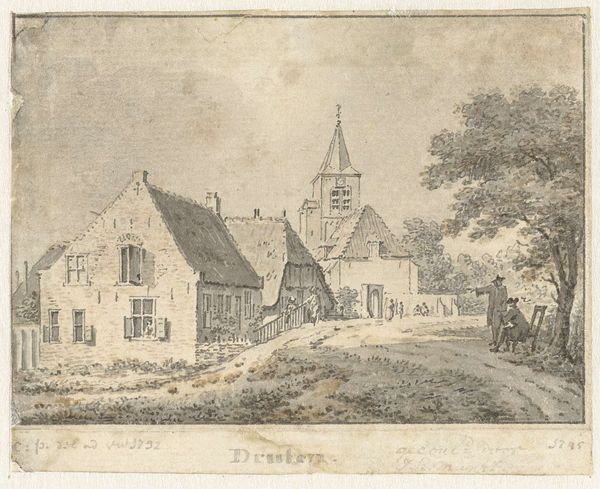
drawing, etching, paper, ink, pen, architecture
#
architectural sketch
#
drawing
#
dutch-golden-age
#
etching
#
old engraving style
#
landscape
#
paper
#
ink
#
pen-ink sketch
#
pen work
#
pen
#
architecture
Dimensions: height 158 mm, width 173 mm
Copyright: Rijks Museum: Open Domain
Curator: Look at the meticulous detail in this 1737 etching by Hendrik Spilman. It depicts the church at Rijnsburg. Editor: It’s remarkably precise. The spire, particularly, dominates, with such a pointed assertion against a soft sky suggested only through negative space. What would such churches have represented to people at that time? Curator: In the Dutch Golden Age, churches were the nucleus of community life, functioning as both spiritual and social epicenters. Spilman, as a draughtsman and printmaker, often depicted topographical views. Editor: Topographical indeed. The careful crosshatching used for shadows lends an almost melancholic aura. Churches have long held cultural weight, repositories of collective memory, haven, places for celebrations of life. Curator: Absolutely, the politics surrounding religious spaces in the 18th century Netherlands was charged; different denominations existed side-by-side but the reformed church generally held a position of dominance within civic life. Editor: Note too how Spilman includes the surrounding flora. These details would offer the local a familiar landscape, the artist a cultural artifact. Trees often appear in art as symbols of growth, endurance and rootedness, a silent witness to community events that played out there. Curator: Precisely, it speaks volumes about identity and place. Prints such as these were distributed widely and fueled the construction of national narratives, or local historical awareness at least. Editor: You feel the connection. This rendering achieves a strange blend: part architectural record, part devotional artifact. Thank you. Curator: It prompts us to consider not just what a church is, but how it functions within its landscape and a society that helped shape its own history. It’s been insightful.
Comments
No comments
Be the first to comment and join the conversation on the ultimate creative platform.
